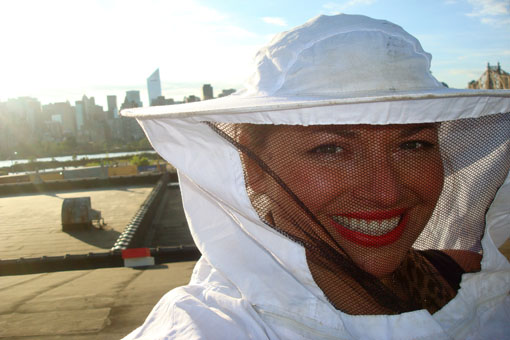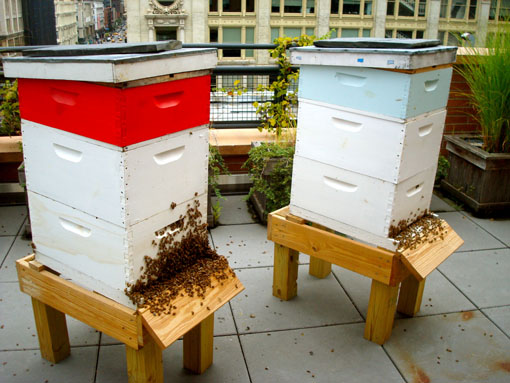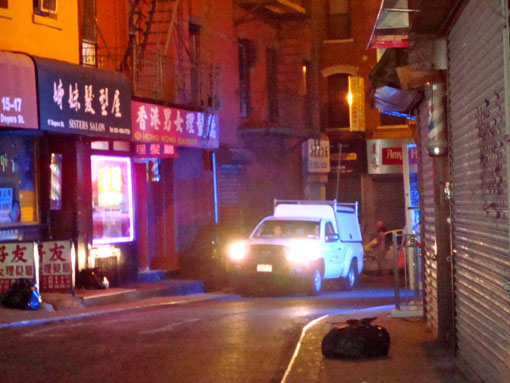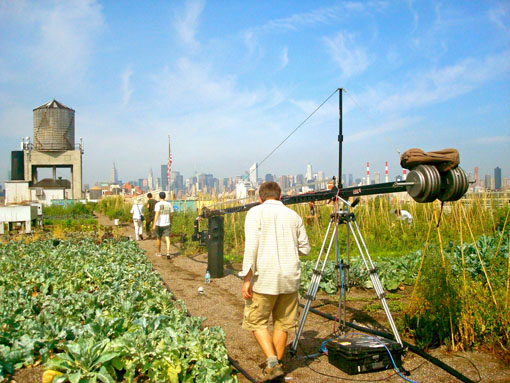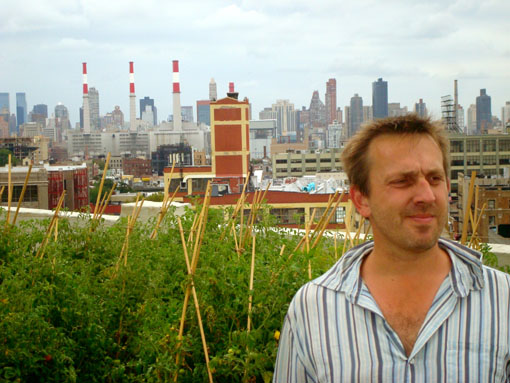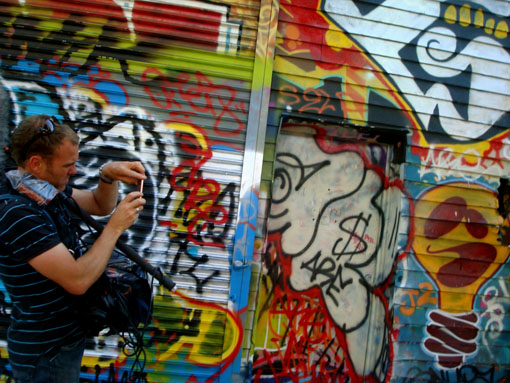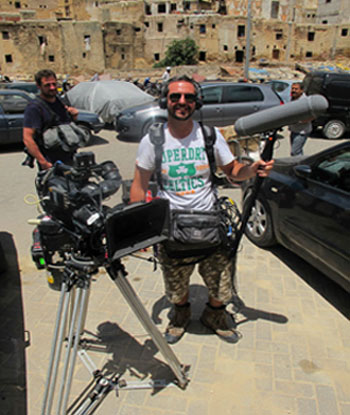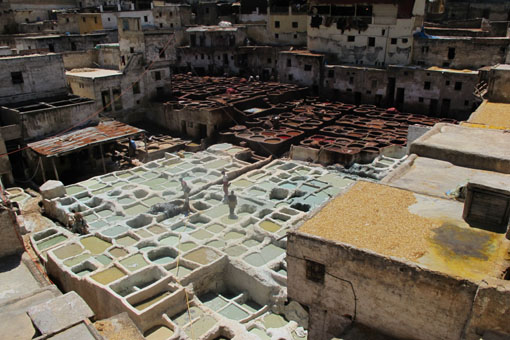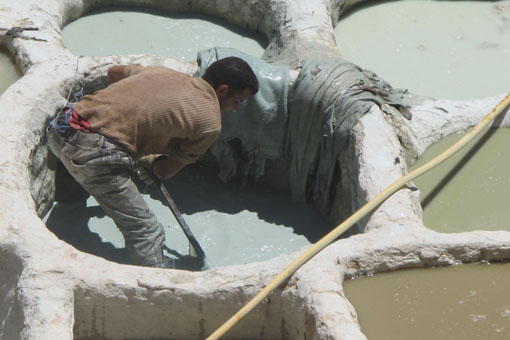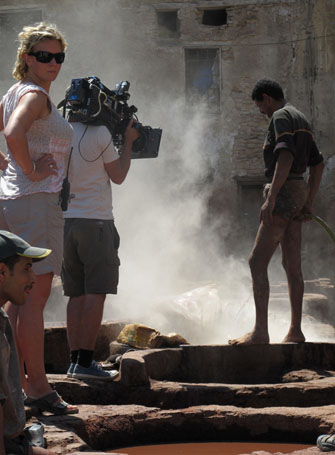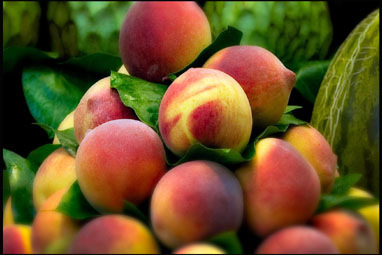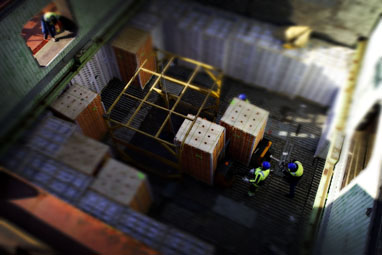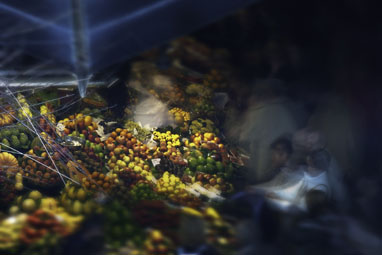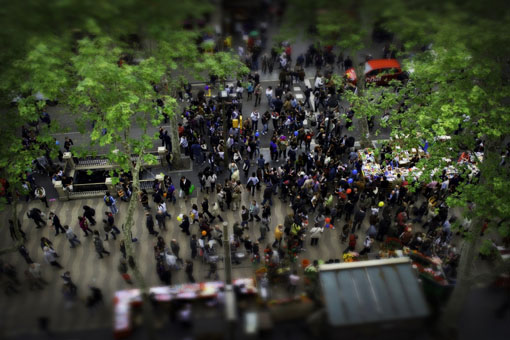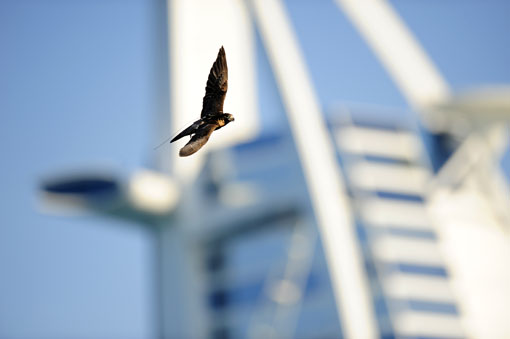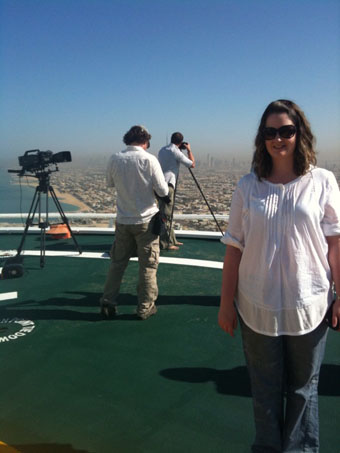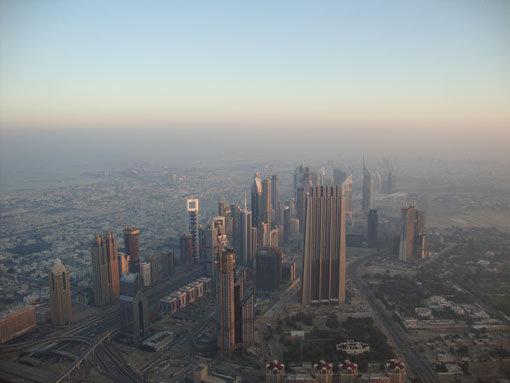Navigating the Urban Jungle
Human Planet crews have become used to their senses being pushed to the extremes in tough environments across the globe- blistering heat, pungent odours, jaw-dropping sights, ear-splitting sounds and palate-stretching cuisines. But at the end of eight days of filming in New York City, the crew had to admit nothing had prepared them for the frenetic energy of Manhattan - the very definition of an all-round sensory assault.
Tens of thousands of TV shows and movies are filmed here every year, but even though Americans technically speak the same language, when you’re not a native, a guide is advisable. That’s where I come in. As a former BBC Wales Assistant Producer who now lives in NYC, I join the team as a ‘fixer’ which has a nice Mafioso ring to it. In practice, it means everything from Locations and Casting Manager to Assistant Producer and Local Restaurant Expert.
In the midst of the August humidity, when anyone with sense and money leaves the city, the crew arrive for filming. Director Susan, Cameraman Toby and Soundman Nick have just flown in from Bristol when I meet them at their hotel in the Flatiron district. We have seven days to film two stories for the last episode of Human Planet the Urban programme. We will be covering rooftop beekeeping, a growing trend here since legalisation in March and the slightly less romantic topic of man’s ongoing battle with rodents in the city.
The next morning we’re joining the frantic pace of New Yorkers with a 6 a.m. start at location, to set up a 30 foot long filming crane in a packed Farmer’s market in Union Square. That was to be the easy start. Over the week we fight the weather, the crowds and the traffic. We climb eight storeys with heavy equipment to a farm amongst the skyscrapers, try not to get stung filming honeybees on a factory rooftop, tread through rat-infested restaurant basements and hang around lots of dark alleyways. We also spend a lot of time in the production van, crawling through the congestion, watching our carefully planned schedule tick by.
Then there is attempted extortion by some locals in Chinatown and getting chased by some angry graffiti artists in Queens. One day there is 5 a.m start, another we don’t finish until 4 a.m. And then because every hard-working TV production unit needs to wind down, there is night out which ends up with some crew members riding a mechanical bull in a Lower East side bar. As a finale there is an unconfirmed case of Martini poisoning.
At the end of it we are all burnt out. New York City has performed its most common trick of chewing everyone up and spitting them out on the rubbish strewn sidewalk. On the last day we film some shots in Central Park, the great, green goddess of Manhattan. As a Welsh girl used to lots of trees, it’s a place which has often saved my sanity, simply by allowing me to feel the grass beneath my feet.
When the crew step onto the sprawling Great Lawn, they seem to come back to life. Around them are postcard-pretty flowers, birds humming and lots of open space. They all confess to me they’ve just realised what they’ve been missing over the last week. More used to The Amazon than the Concrete Jungle, they’d felt quickly hemmed in by the city. Now they were themselves proving the very essence of what Human Planet is all about-that no matter where humans choose to reside, they will eventually seek out the natural world.
We all stop and breathe and stand very still, in the calm amongst the insanity of New York City.
The Secret of Pigeon Poo
Morocco is a land steeped in a history as rich and as colourful as one of its most prized commodities - leather. We made our way to the ancient city of Fes (or Fez) where men have been tanning leather for over six centuries. This elaborate process has barely changed in those six hundred years and we were lucky enough to be guided through the many processes by Tammy, a young man already immersed in the art.
The Tannery itself is a collection of vats, dedicated to the different processes of tanning animal hides. There is a vast area of vats filled with liquid lime, in which the hides are immersed to soften them. This is an extremely dangerous process and the tanners go about their task with the barest of protection from the skin-burning lime. The crew survived unscathed except for the odd splash but this was enough to make us extremely wary.
From here the hides are washed in what can only be described as giant skin washing machines, whose constant drone supplies the tannery’s sound track. The next stage is the part we were especially interested in filming - the process of using pigeon poo to make the hides extremely supple. The droppings from wild pigeons are the only ones our character Tammy uses as they’re guaranteed to have a high level of ammonia, unlike their caged cousins. You see working for the BBC teaches you things you never knew you needed to know!
I have somehow managed to skip trying to describe the smell the Tannery emits… but here goes.. It’s like a thick mist, which is invisible to the eye but apparent to the skin, hair and especially nose of the unwary visitor. Our first day in and our Making Of cameraman, James Aldred, had a few close calls trying to keep his croissants down. All of us were totally taken aback by just how intense the smell was; it can only be described as smelling of rotting flesh with a tinge of sweetness. Oh yeah and add 40 degree heat to that recipe as well.
We shot some of the sequence in the Medina; this was a magical experience for me as it felt as if I was going back in time. The Medina in Fes is famous for its many winding narrow streets, the air filled with the smell of exotic spices and the sound of street sellers offering their wares to the haggling masses. Morocco has left a lasting impression on me and given me the urge to explore more foreign and ancient lands; a road trip across North Africa might be on the cards…Any takers?
PC Heads for the Heights
By Andrea Jones, Production Coordinator, Rivers/Urban Team
The lead up to a shoot can be hectic – especially when one team is heading off to Dubai, another is getting ready for a frozen river trek in the Himalayas with 400kg of kit and another’s filming creepy crawlies in London all in the space of a month! Things normally calm down for myself and the office team once the crew leaves for the airport. We pack them into the van, wish them well and then breathe a sigh of relief as we watch them drive off into the sunset. Apart from the regular check in calls, we don’t hear much from them until they get back. This time was different - after 18 months sending my team all over the world, I found myself in the van with crew and kit, on the way to Heathrow on my first Human Planet shoot. Mark Flowers (director), the crew and I were heading for Dubai to film the story of a falconer for our Urban episode.
I couldn’t believe how easy they made it seem to get 18 cases of camera kit onto the plane, then off again at the other end - not to mention clearing customs with it. I think I’ve got a tough time when I travel back home to Oz with 2 cases. The funny thing is, 18 cases is nothing compared to the 40 we sometimes travel with! The ability to steer two to three airport trolleys at a time should be a pre-requisite for anyone going on location - it’s quite a skill. With all the kit safely at the hotel, our thoughts turned to the fun yet frightening part – the filming! We spent the next eight days with falconer David Stead and his amazing falcons at two of Dubai’s five star hotels. To get the full story you will need to watch the series.
Early on in the shoot, we were given permission to film from the helipad of the Burj Al Arab hotel – perched onto the front of the building over 200m up! As we walked up the red carpet and onto the helipad, we realised what a privilege it was to be able to film from such a great vantage point, where you could see the ever changing skyline of Dubai’s business district in all its glory – it’s lucky none of us were afraid of heights!
Speaking of heights, we were also lucky enough to travel to the 124th floor observation deck of the recently opened Burj Khalifa, the world’s tallest building. Being up that high gave us a different perspective of the city, and a perfect spot to film the sun rising over the desert. Looking at it now, it’s hard to believe that just 31 years ago Dubai’s business district had only one skyscraper, the World Trade Centre.
The most challenging day of the trip for me was the Aerial filming day, where I was on the ground coordinating David and his birds, while my producer Mark and our Cineflex (Aerial) cameraman Simon were up in the helicopter. We had arranged for David and his falcons to be on the roof of the hotel ready for filming at 7:45am, so you can imagine my surprise when I heard the unmistakable buzzing of the chopper flying over just before 7:30! Luckily they were just getting a feel for the location, but I must admit I got a little worried, as we were on the ground at the time with one lift, 6 flights of stairs and a 10 foot ladder standing between us and the rooftop! As the production coordinator I look after the budgets and know the considerable investment needed to commission a Cineflex aerial shoot. I certainly didn’t want to be the one to jeopardise it – luckily our characters, human and animal, we were ready on time and all went to plan, David and his falcons did a fantastic job and we ended up with some extremely exciting footage.
It was great to get out on location and get a taste for some of the challenges the team has to deal with every time they go away. We were lucky , working in a fully functioning stunning city with a great subject in David and his birds, coupled with our talented crew. The alchemy that is television production all came together and we left with another stunning sequence for the series.
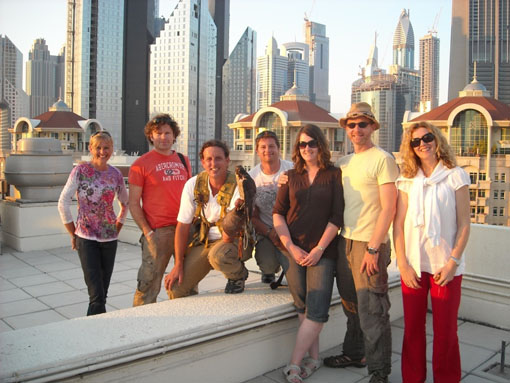
- The Crew (L-R) – Nicola Ohlenforst (David’s business partner), Kieran Doherty (Photographer), David Stead (Falconer), Mark MacEwen (Cameraman), Andrea Jones (PC), Mark Flowers (Producer/Director) and Julia Wheeler (Fixer)
The eight days on location went by so quickly, and before I knew it we were on our way back home. So for now it’s back in the office for me, where we are getting ready for another shoot, this time to Ottawa. Hopefully there’s another adventure in the not too distant future, but for now it’s back to budgets…
The Great American Road Trip
by Ciaran Flannery, Assistant Producer, Urban/Rivers team
Austin
As one of two Americans working on Human Planet, I was immediately suspicious when I was told I had two shoots to direct in the USA. This could be a good way of getting rid of me I thought, merely steal my Irish passport and I’m stuck back home. Fortunately my Human Planet colleagues are far too scrupulous to think up such a nefarious scheme, so I set out for Austin, Texas at the end of August to film the world’s largest urban bat colony for the “Urban” programme.
Austin prides itself on being weird and funky, and my mission was to capture that as well as the spectacular emergence of the bat colony from under the Congress St Bridge. Days were spent lining up shoots and nights were spent capturing the flavour of the city – particularly the self-given moniker “Live Music Capital of the World.”
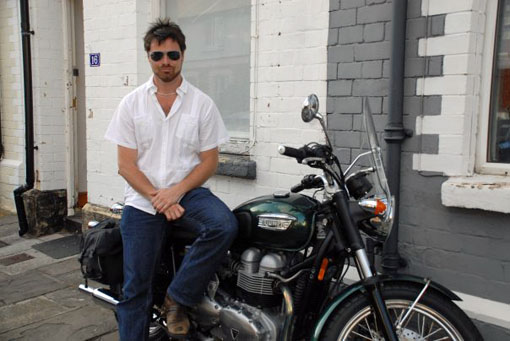
Here I am, preparing for a long road trip
I arranged to see one of my country music heroes – Billy Joe Shaver, who was playing a show at a beer garden. I was in rock and roll cowboy heaven. The morning of the show, I pulled back the blinds of my hotel room and looked out on a biblical deluge. The epic Austin drought had ended, and now the city was filled with buckets of rain. Billy Joe couldn’t even make it down from Waco for the show. And worse, the bats now wouldn’t need to come out early. Monsoon rain poured for the next three days – which is what we needed in India a month earlier on another shoot…
Estes Park
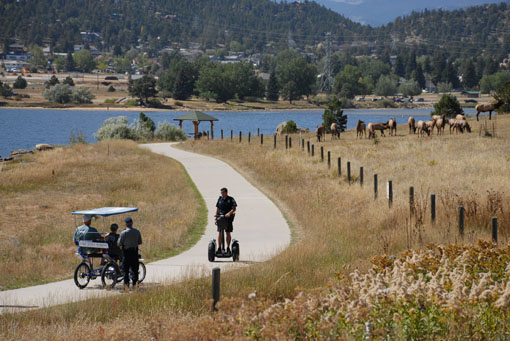
Policeman on a scooter in Estes Park
Off to Colorado to film elk in Estes Park. Because Estes is just outside Rocky Mountain National Park, the town gets thronged with tourists, especially on the weekends. And tourists love to ask what you are doing, especially right when you are filming. This routine had endless variations, but my favourite was when a heavy set gentleman in a cowboy hat clambered out of his Texas-plated pickup and stopped to stare at us. My cameraman and I were carrying the HD camera and tripod to set up and film elk interrupting a golf game. “Where y’all from? The radio station?” he asked.
Detroit
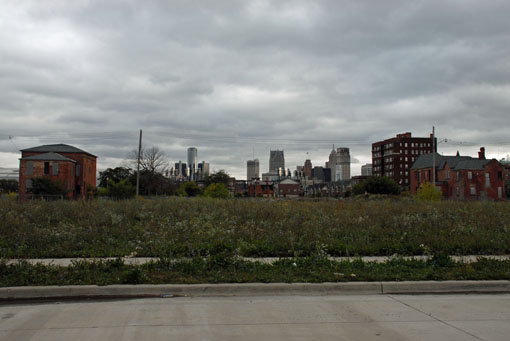
The Detroit City skyline today
The shoots now over, I sent the kit and footage back to the UK with my cameraman and headed off to recce Detroit. I had read about Detroit and seen photos of its urban decay, but nothing prepared me for the devastation of the city. Thousands of acres of the city are abandoned. You can drive for blocks without seeing a building. And then the buildings you do see are burned out shells. 19th century timber baron mansions have forests growing out of them.
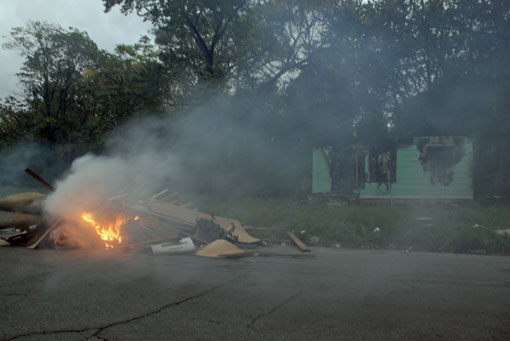
Trash burning in Detroit
The city was once the world’s wealthiest and now classic art deco masterpieces lie empty. The factories of Motown and the Arsenal of Democracy during WWII are silent, save for the sounds of scavenging brick farmers – people who pull the bricks from the walls to sell at salvage yards. In some neighbourhoods there are now more pheasant than people - an apt example for our “Urban” programme, showing how quickly nature colonises abandoned cities. I’ve been to slums all over the world. I’ve filmed in the Lower 9th in New Orleans after Katrina. And the only place I’ve ever been that compares to Detroit is Kabul.
Ottawa
My last stop on the never-ending North American road trip was for the “Rivers” programme and hit close to home. I was born in Canada (yes, it gets confusing – American and Canadian with an Irish passport), and just before spring in the Canadian capital of Ottawa they blow up the ice on the river, and set a frozen waterfall free. As a boy, I was warned to stay away from the Rideau River, which flowed just behind my house – don’t go near the ice when spring blasting season happens. Here I was, almost 30 years later, recceing my old neighborhood. As I walked around the neighborhood I stopped by my old house, where I used to skate after school, where my dad taught me to play baseball, where I knocked the wind out of me jumping my bike, and where I used to throw crabapples at buses. It was a sweet ending to a long road trip.
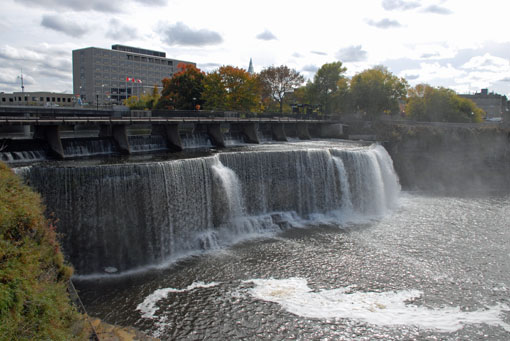
Rideau Falls, Ottawa
Cardiff Coda
Finally, it was time to fly back to the UK. Completely exhausted, I landed at Heathrow and was shuttled back to Cardiff. All the way I was dreaming about the joys of climbing into my bed and sleeping comfortably before rejoining the office rat race. As I let myself into my flat, a neighbour came up to me. “Are you Ciaran?” “Yes”. “Well I have a strange story for you. While you were gone my cat got into your house for 5 days – I got him out, but I don’t know what kind of mess he made.” The cat hadn’t made much of a mess, but he did choose a choice spot – smack in the middle of my mattress. Ahh! the relationship between man and nature in the Urban environment indeed – no rest for the weary!
Welcome to Human Planet
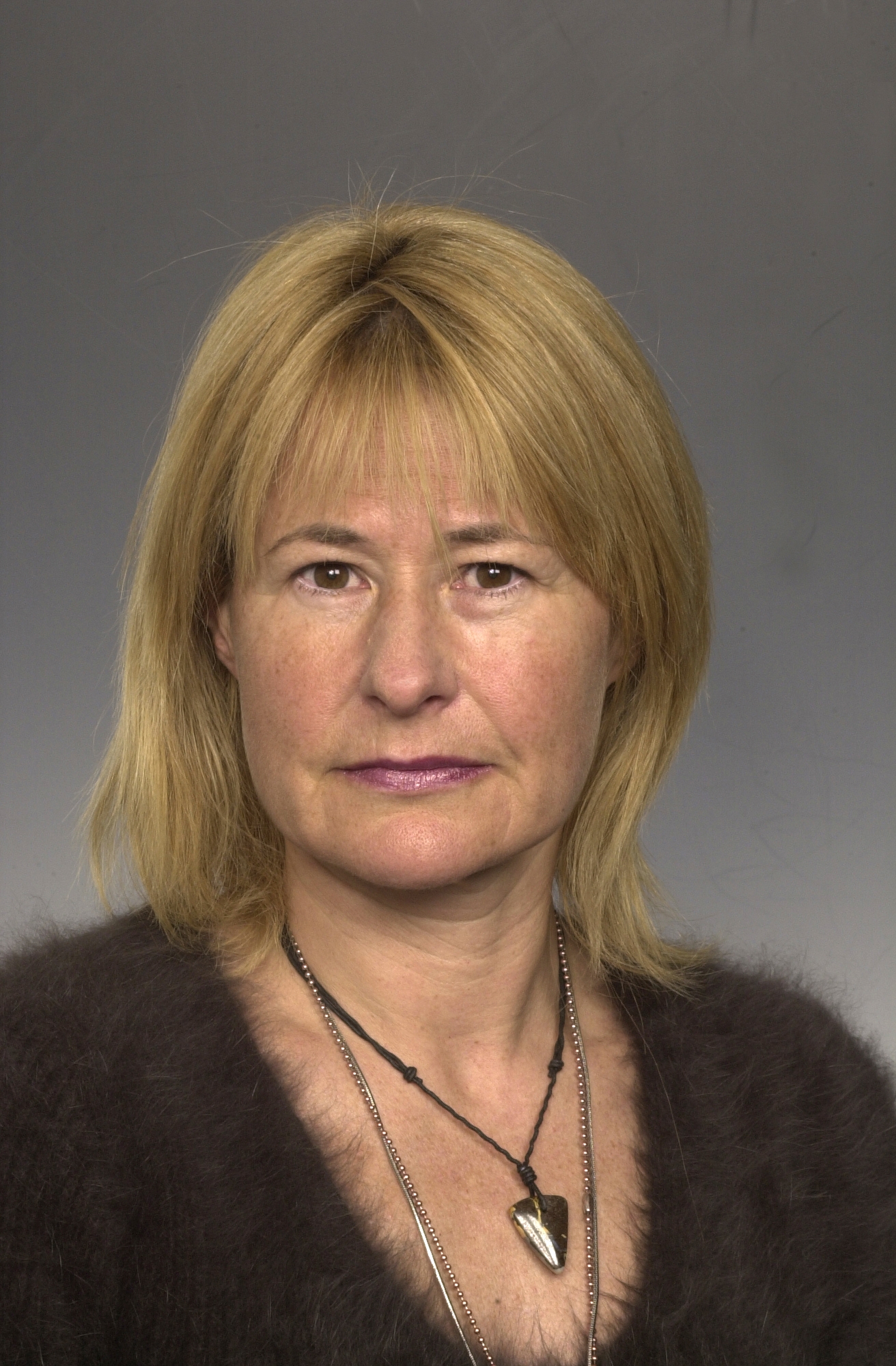
Dale Templar, Series Producer
by Dale Templar, Series Producer
So what is Human Planet? Human Planet is a new 8×50 minute landmark documentary series being made by BBC Television. The series celebrates the human species and looks at our relationship with the natural world by showing the remarkable ways we have adapted to life in every environment on earth. It is due to be transmitted in the UK in the New Year 2011 and will be rolled out across the world soon after.
The production team is split across two sites, one in Bristol and one in Cardiff.
In BBC Bristol we are part of the world renowned Natural History Unit. You may have heard of us, but if not, you’ve probably watched some of our programmes. Many have been presented or narrated by Sir David Attenborough, like Planet Earth and Blue Planet. Most recently we’ve just finished Nature’s Great Events which our own executive producer, Brian Leith, worked on.
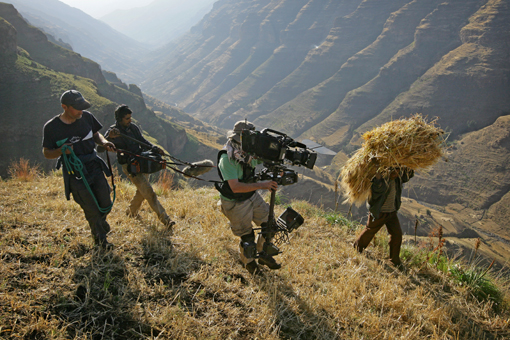
BBC Human Planet : Simien Mountains
BBC Wales, based in Cardiff, are probably best known in the UK right now for producing high end popular dramas like Doctor Who. Torchwood, another sci-fi doc that comes out of Cardiff, is also an HD production and Human Planet will be using the same excellent post-production facilities. The factual department is best known for its ground-breaking anthropology documentary series Tribe.
In total we have a core team of 20 phenomenally talented programme makers, who come with a wide range of skills and experiences. Working with us are some of the best wildlife and documentary camera crews and fixers in the world. For the first time we have a dedicated stills photographer, Timothy Allen, who will be posting his own Human Planet blog every week at http://timothyallen.blogs.bbcearth.com/
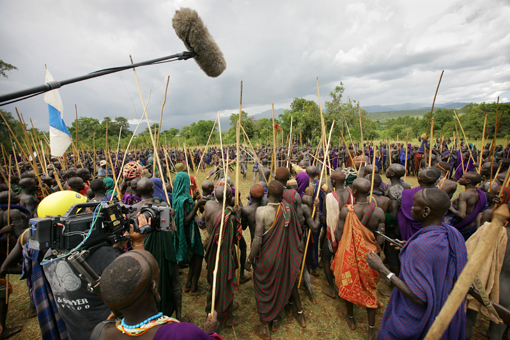
BBC Human Planet : Suri stick fight
The series started in full production in the summer of 2008 and we will be shooting over 70 stories in some of the most remote locations on earth in around 40 different countries.
Each episode will focus on one single environment: desert, jungles, arctic, grasslands, rivers, mountains, oceans and urban. Many of the stories are extremely dramatic and will show how we have successfully adapted and survived in the most challenging places on the planet.
As from next week each member of the team will be blogging their stories from the Human Planet. I will keep you updated on where everyone is and give you general news about the series.
Currently, we have teams that have just come back from the remote southern region of Mongolia, filming for the desert episode. On location are the Jungles and Mountains team who are in the Central African Republic and Nepal. I’ll let you work out which team is where!
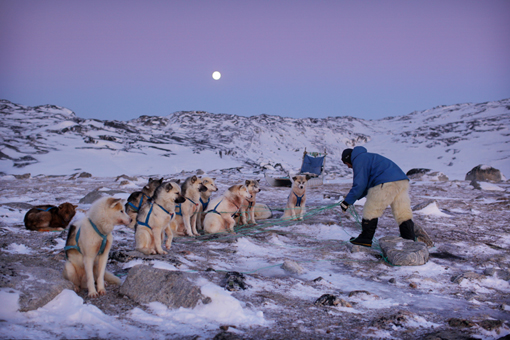
BBC Human Planet : Arctic Dawn
That’s it for now …enjoy the photos and the sneak preview from the series. See the link if you’d like to read what Timothy Allen’s been up to and don’t forget to explore the new BBC Earth site too. Look out for the regular Friday posting from the Human Planet team, with fascinating stories and tales from both our many locations and from the office.
